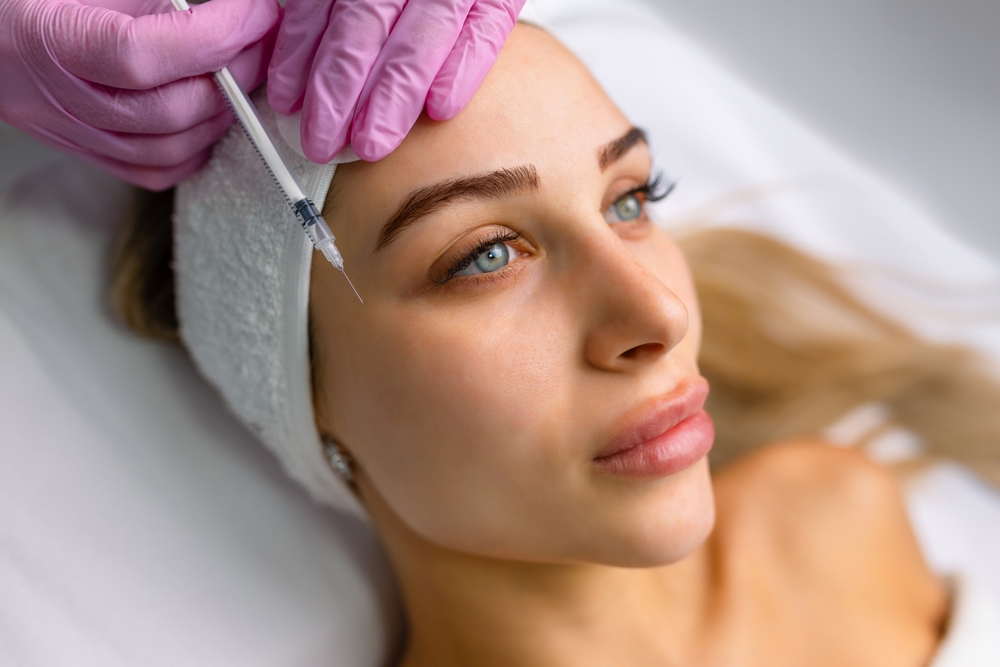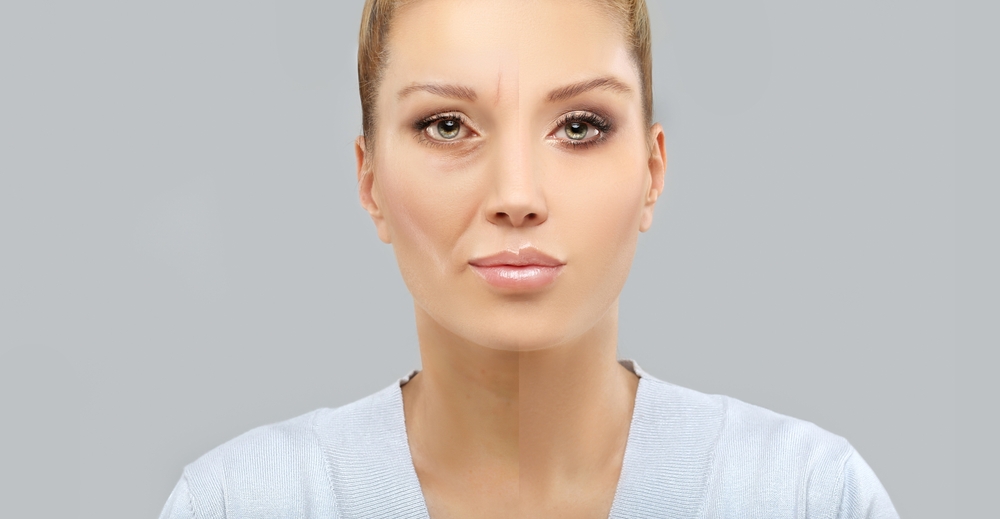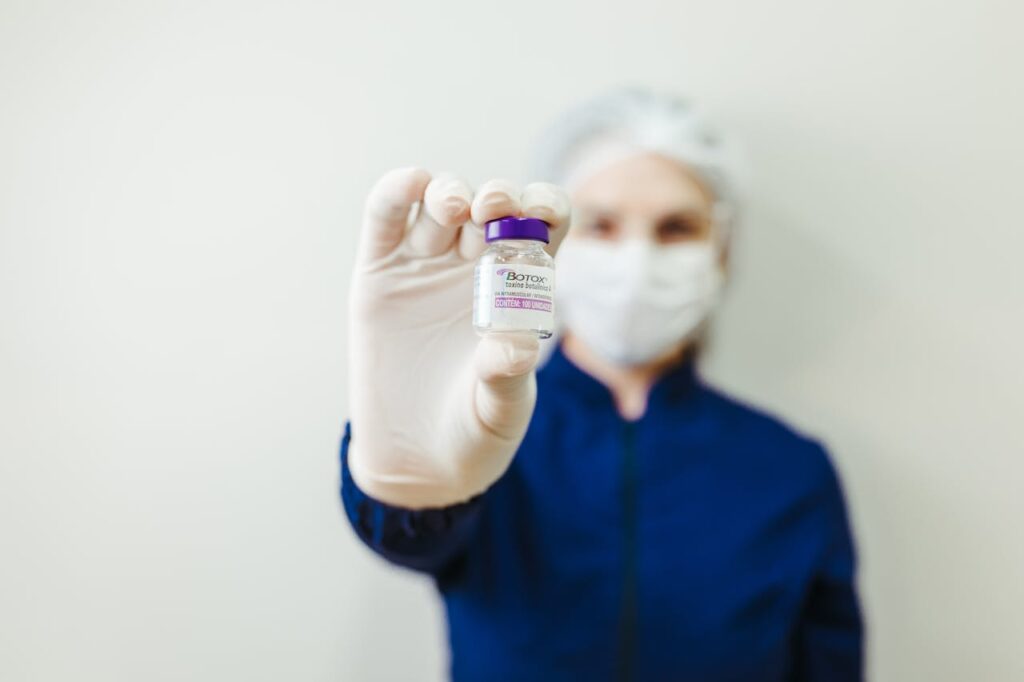Doctor Tests Botox on One Side of Face and the Results Are Stunning

A doctor decided to take the ultimate plunge to uncover the real effects of Botox by injecting it into only one side of her face. The experiment, which quickly went viral across multiple platforms, left audiences stunned at the stark difference between the two halves of her face. What began as a medical curiosity soon transformed into a striking visual representation of what Botox truly does to our facial features over time.
The doctor, who has years of experience in cosmetic procedures, wanted to create an honest demonstration for her patients and followers. By treating only one side of her face, she allowed the natural process of expression, muscle movement, and skin aging to continue on the untreated side, offering a live before-and-after comparison like no other. Within weeks, the transformation began to show noticeable differences.
Social media users could hardly believe their eyes. One half appeared smoother, lifted, and almost doll-like, while the untreated side retained its natural lines and mobility. Many were quick to call the result both fascinating and unsettling. It became not just an experiment in beauty but also a discussion about authenticity, health, and how far people are willing to go in pursuit of youth.
As the images circulated online, experts and viewers alike began debating whether the results proved Botox to be a miracle or a mask. What the doctor revealed next took the conversation to another level, providing deeper insight into the science behind the injections.
Understanding What Botox Actually Does to the Face
Botox, medically known as botulinum toxin type A, works by temporarily paralyzing muscles beneath the skin. When injected strategically, it prevents the muscles from contracting, thereby reducing the appearance of wrinkles and fine lines. It is one of the most popular cosmetic treatments worldwide, with millions of procedures performed every year.
According to the doctor, her intention was to visually demonstrate what happens when facial muscles on one side are immobilized while the other side remains fully active. Over time, she observed not just smoother skin but also subtle asymmetries in facial movement and structure. The Botox-treated side lost its ability to express certain emotions, while the untreated side continued to reflect natural muscle motion.
Medical experts often explain that Botox does not stop the aging process but instead changes how the face moves. Repeated use can prevent deep creases from forming, but it can also alter the balance of the face if used too often or unevenly. The doctor’s experiment showed that the difference between a “frozen” and “natural” look might be smaller than people think yet psychologically significant.
Her video served as a visual case study that moved Botox out of the realm of vanity and into scientific curiosity. The underlying message was that even safe and well-understood procedures can have visible trade-offs when taken to extremes.
The Startling Visual Differences Between Both Sides
Viewers described the doctor’s before-and-after comparison as both mesmerizing and eerie. The Botox-treated side of her face appeared tighter, smoother, and slightly lifted. The other side showed fine lines, a softer jawline, and more expressive muscle motion. The human brain is naturally drawn to symmetry, so seeing a single face divided between youth and age had an almost uncanny effect.
Interestingly, the changes went beyond skin texture. Lighting and camera angles did not alter the visual truth: the Botox side reflected a sculpted calmness while the natural side seemed more alive. Even the doctor herself admitted feeling strange looking in the mirror, describing the split effect as “looking at two different people.”
The most striking observation came when she smiled. The untreated side displayed warmth and mobility, while the treated side seemed partially frozen. It offered an unfiltered look at how Botox, while effective at eliminating wrinkles, can subtly mute facial expressions that communicate emotion.
Her findings reignited public conversations about how our society views beauty and emotion. People began asking whether we have come to value smoothness over expressiveness and if scientific perfection might sometimes rob us of something profoundly human.
Science Behind the Smoothness
Botox’s smoothing effect is the result of its unique ability to interrupt nerve signals that tell muscles to contract. This pause in communication leads to temporary relaxation of targeted areas, reducing the skin’s ability to fold and crease. The science behind it is well-documented, but seeing its influence in such an extreme comparison brought the data to life.
Researchers point out that consistent Botox use can influence the way facial muscles adapt. When one side of the face is immobilized for extended periods, other muscles may compensate, which can alter long-term symmetry. The doctor’s half-face test visually illustrated how localized paralysis can produce a visible imbalance over time.

While the experiment was safe and medically supervised, experts caution that Botox misuse or uneven application can result in drooping, asymmetry, or unnatural rigidity. The demonstration served as a reminder that while Botox is a marvel of modern cosmetic medicine, precision and moderation are essential.
Her controlled self-experiment highlighted both the promise and the limitation of one of the world’s most popular beauty treatments. It offered an important reality check about the boundaries of artificial enhancement.
The Emotional and Psychological Side of Cosmetic Treatment
Beyond the physical results, the experiment touched a deeper emotional chord. Many viewers commented on how the untreated side of the doctor’s face appeared more “alive” and relatable. Facial expressions are deeply tied to human communication and empathy. When one side appears less animated, it can change how a person is perceived by others.
Psychologists have long noted that Botox can slightly affect emotional expression and even emotional experience. Because certain facial muscles help send feedback signals to the brain about emotions, freezing them can dull not only how someone appears but also how they feel. The doctor’s experiment inadvertently became a real-life example of this subtle but significant phenomenon.
Her honest reflections about feeling “disconnected” from one side of her face resonated with viewers worldwide. It opened conversations about the emotional cost of chasing perfection. Beauty, as it turned out, might not just be skin-deep but emotion-deep as well.
By confronting her own reflection, the doctor turned a cosmetic experiment into a philosophical one, sparking a dialogue about how modern aesthetics intersect with identity and authenticity.
What This Means for the Future of Cosmetic Medicine
The experiment’s viral success also opened an important discussion among medical professionals. Dermatologists and plastic surgeons praised the educational value of the visual comparison. It encouraged a more balanced perspective among patients who often seek treatments without fully understanding the underlying effects.
Many experts noted that such open experiments could help destigmatize both sides of the cosmetic conversation. People who choose Botox are not necessarily vain, and those who avoid it are not necessarily neglecting themselves. The key takeaway, they said, was informed choice.

By making the invisible effects of Botox visible, the doctor gave the public a new tool for making conscious decisions. It encouraged moderation, research, and trust in qualified practitioners over quick or cheap alternatives. Her experiment might very well redefine how transparency shapes beauty standards in the years ahead.
Ultimately, the project reinforced that science and aesthetics can coexist harmoniously if guided by knowledge and ethics rather than obsession.
Reflecting on What Beauty Really Means
As the buzz settled, the deeper takeaway of the experiment remained. It challenged viewers to think about their relationship with aging and self-image. Is beauty about preserving youth, or is it about embracing the natural story that time writes on our faces?
The doctor’s half-treated face became an icon for introspection. On one side was the allure of perfection, on the other, the authenticity of expression. Together, they told a powerful story about balance. In a culture that often pressures people to hide every wrinkle, this visual truth reminded everyone that imperfection is not a flaw but a feature of humanity.
Her experiment was more than a viral trend; it was a mirror held up to society. It asked difficult questions about why we fear aging and what we might lose when we erase every trace of it. The answers may vary for each person, but the conversation it started is one that will linger far longer than the Botox itself.
In the end, science and beauty found common ground in honesty. The doctor’s bold demonstration proved that sometimes, the most revealing experiments are the ones we perform on ourselves, not to change who we are, but to better understand why we choose to.
Featured Image Credit: Ruslan Malysh | Shutterstock
Loading...

